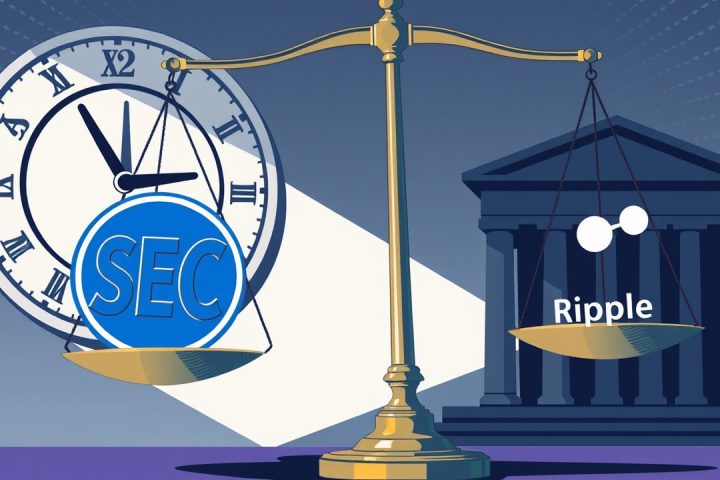Introduction
In the realm of Web 3.0, a single regulatory miscalculation can lead to significant consequences for startups, with the Securities and Exchange Commission (SEC) poised to step in. Esteemed projects such as Ripple and Block.one have found themselves entangled in costly legal battles stemming from regulatory lapses. Ripple’s ongoing struggle with the SEC, which argues that its XRP token constitutes an unregistered security, has resulted in a lengthy and expensive legal dispute, reportedly costing the company upwards of $150 million in defense fees following a recent partial victory in court.
Compliance Strategies for Web 3.0 Founders
Given the growing scrutiny from the SEC, it is crucial for new Web 3.0 ventures to integrate compliance measures from the outset to avoid detrimental scenarios like asset freezes or enforcement actions. This article aims to equip founders with essential strategies to navigate regulatory challenges and build resilient projects.
Understanding SEC Regulatory Oversight
Founders of blockchain startups must familiarize themselves with the SEC’s mission to protect investors and ensure orderly markets. The SEC’s purview extends beyond initial coin offerings (ICOs) into decentralized finance (DeFi), non-fungible tokens (NFTs), and various token fundraising mechanisms. A common misconception is that decentralization can shield projects from regulatory scrutiny; however, the SEC has intensified its efforts to hold blockchain projects accountable. Startups that proactively align their frameworks with regulatory expectations gain credibility among investors and users alike.
The Howey Test: A Key Compliance Metric
Central to SEC evaluations is the Howey test, designed to determine whether a digital asset qualifies as a security. This test considers whether investments are circulated in a common enterprise with a reasonable expectation of profits derived from the efforts of others. If a project answers ‘yes’ to all four components of the Howey test, it faces potential classification as a security. To safeguard against this, founders should structure their tokenomics carefully, which may involve delaying token issuance or minimizing profit expectations. Legal advisories can help substantiate a token’s non-security status, counteracting the risk of SEC classification.
Strategic Entity Formation
How a startup organizes itself from the beginning is paramount in terms of regulatory exposure. For instance, companies registered in the U.S. are directly under SEC authority, necessitating strategic choices regarding entity type and jurisdiction. Opting for favorable offshore jurisdictions may decrease regulatory burdens, but it is crucial to maintain compliance with U.S. law, especially if U.S. investors are involved. A well-conceived dual-entity structure could mitigate risks, provided there is a strong governance framework.
Tokenomics That Prioritize Compliance
Thoughtful tokenomics design can preempt SEC scrutiny. Founders should focus on developing mechanisms for token acquisition that do not hinge on speculative commitments. Structures that reward tokens based on participation rather than profit allure reduce legal challenges. Vesting schedules for team and investor tokens must also be transparent to minimize regulatory risk. Decentralization at launch further diminishes potential regulatory repercussions.
Educational Compliance Initiatives
Educating internal teams about compliance obligations is vital. This approach minimizes accidental regulatory infringements. Regular audits, legal reviews, and engagement with regulators through no-action letters can create a cooperative regulatory environment, reducing the risk of sanctions.
Implementing KYC/AML Protocols
For any Web 3.0 project, adherence to Know Your Customer (KYC) and Anti-Money Laundering (AML) policies is essential. These measures are critical to satisfying SEC and Financial Crimes Enforcement Network (FinCEN) requirements, as neglecting them can lead to serious liabilities. Startups must implement effective identity verification measures during fundraising and services provision, employing tools like Chainalysis for monitoring irregular activities.
Navigating Fundraising Regulations
Founders must be adept in aligning their fundraising strategies with SEC regulations to avoid unwanted attention. Utilizing exemptions such as Regulation D for private offerings or Regulation Crowdfunding can facilitate compliant capital raising. Key pitfalls to avoid include misrepresentation and underreporting offerings, underscoring the need for thorough legal counsel in every fundraising initiative.
Ongoing Legal Support and Monitoring
As the landscape of blockchain regulation evolves, retaining knowledgeable legal advisors becomes indispensable. These professionals should not only understand the law but also the intricacies of blockchain technology and its community. Regular audits and compliance check-ins are necessary to adapt and remain ahead of any regulatory shifts.
Conclusion
In summary, for founders with innovative Web 3.0 ambitions, building a legally compliant foundation is essential. By embedding thoughtful compliance strategies into their operations, startups can navigate regulatory waters more effectively, thereby fostering sustainable growth while maintaining operational integrity.




